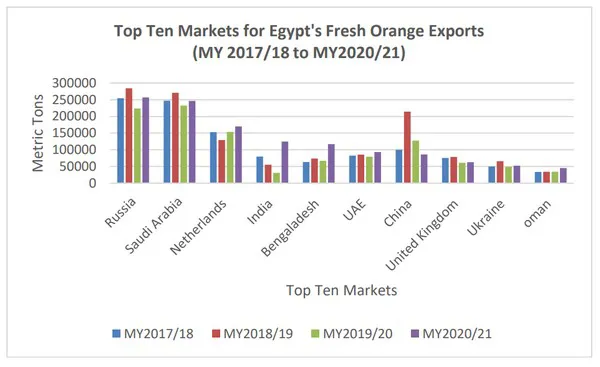In MY 2021/22, FAS Cairo forecasts orange production to decrease by almost 16 percent, or 570,000 MT to 3 MMT. The decrease in production is attributed to severe weather conditions and fluctuating temperatures during flowering of the trees which impacted fruit set and production. Orange production in the Nile Delta was also impacted by a 25-30 percent increase in fertilizer prices due to higher costs of production and larger exports by the fertilizer industry to capture higher prices in the global market.
There is also a revision of the MY 2020/21 estimate upwards by 170,000 MT to 3.57 MMT from the USDA official projection of 3.4 MMT. We attribute the increase in production to higher yields and favorable weather conditions last season during the flowering time that positively impacted fruit set and hence the production as a result.

Most of Egypt’s orange production come from commercial farms on reclaimed desert land established during the last three decades, rather than the Nile Valley where land ownership is fragmented and farmers cannot afford the necessary level of investment for sustainable orange production.
Orange is the major citrus crop in Egypt, representing about 80 percent of the total cultivated citrus area. Egypt’s main orange varieties include the following: Washington Navel Orange: Washington Navel is the key cultivar navel orange grown in Egypt and the best-known naval orange being exported.
There are other lesser known navel orange cultivars such as Navelate, Cara Cara, New Hall, Navelina, Fisher, Leng, Fukumoto and Lane late. Fruit color break starts in late September and ripening fruit dates extend from November to March.
Click here to read the full report.
Source: apps.fas.usda.gov
